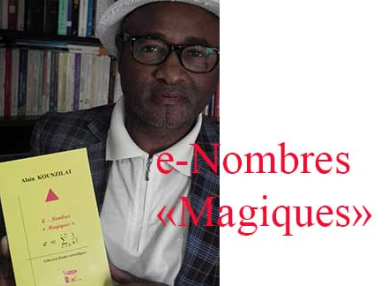
“Magic Numbers,” March 2015, 90 pages. Scientific Studies Collection.
Science is particularly built upon the “magnificent” numbers we often use. This is the case for the number e or π, irrational numbers that frequently appear in functional analysis, geometry, physics, economics, and chemistry. The idea of studying some numbers that I call “magic,” such as 0; 1; e and π, stems primarily from a belief and a practice based on the premise that there are hidden powers in nature that are reconcilable with number theory. Everything is number, and every number expresses a vibration.
This book is a summary of several mathematics courses, aimed at initiating students into number theory and scientific research.
“Magic” numbers are the so-called floating-point numbers. They are complex numbers or real numbers of the form exp(π), (read exponential of pi). This refers, of course, to the exponential with base e.
Truly a condensed course on complex numbers; on the Riemann integral; and on logarithmic and exponential functions at an elementary level (final year of high school science track and first year of university).
The book contains four chapters: the number 0; the number 1; the number e. The final chapter on the number π provides a fundamental overview of trigonometry and an application to signals. In reality, π determines the end of a cycle…
Even an elementary mathematics book can be a collection of recipes, and readers will find some here. A standard mathematics formulary is included at the end.
ISBN: 2-910153-82-7
Price: 10 euros, shipping included.
